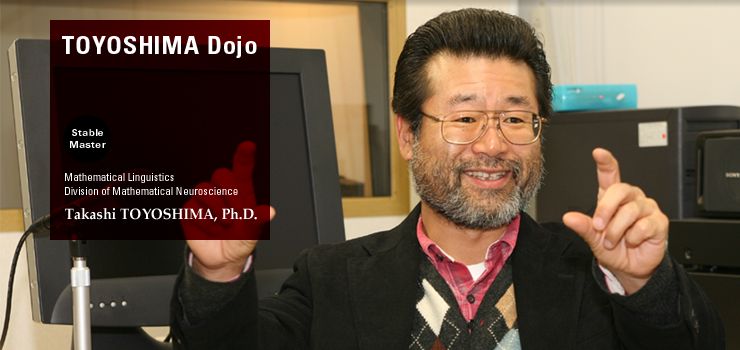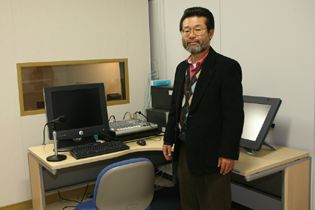 |
| |
 |
| Theoretical linguistics is my specialty and
I am investigating the computational system of human language,
how language is generated and processed in the human brain,
based on mathematical modeling. I am particularly focusing
on the economy issues in theoretical linguistics, that is,
how to reduce the computational complexity implicated in the
theory of generative grammar, and its viable implementation
in the human brain. In the interdisciplinary field of computational
linguistics in recent years, applied linguistic engineering
researches are vigorously carried out to develop speech dialogue
systems and machine translation systems. In my laboratory,
we accommodate research themes to fit the students' needs
and interests as much as we can. For example, one student
is currently exploring whether and how much it is possible
for artificial neural networks to learn grammar through sequences
of binary numbers converted from natural language, in a setting
just as human infants acquire language naturally without explicit
instructions. |
 |
| I
frequently come across engineering students who naively
assume that it is a matter of computational resource
to design a speech interface for a machine, say a robot,
without being aware of the complexity and problems inherent
in natural languages. Therefore, I have prepared this
crash course to impart the basic understanding of language,
necessary for applied researches in linguistic engineering,
including voice recognition, voice synthesis, machine
translation, data mining and dialogue systems. In the
first half, students are to learn the basics of linguistics
from phonetics to semantics, familiarizing themselves
with the terminology and concepts for the literacy in
the field. In the latter half, I will provide personalized
instructions tailored to each student's chosen research
topic. Through this package, I hope that students would
be able to develop a concrete research plan, identifying
what are the problems, where a solution can be found,
and how they can solved, in order to reach their chosen
research objectives. |
 |
 |
|
|
|
|